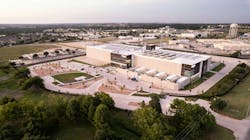When Communities Push Back: Navigating Data Center Opposition
Key Highlights
- Community opposition to data centers has led to the blocking or delaying of over $18 billion in projects across the U.S., highlighting the importance of local engagement.
- Common concerns include resource consumption, environmental impacts, noise, aesthetic disruption, and limited local economic benefits, fueling organized resistance efforts.
- Case studies from Louisa County, VA, and Hancock County, IN demonstrate how grassroots activism can influence project approvals and lead to project withdrawals or modifications.
- Developers are encouraged to map opposition early, publish environmental data transparently, and negotiate tangible local benefits to mitigate resistance and streamline approvals.
- Proactive community engagement and regulatory compliance are becoming essential strategies for sustaining the growth of AI-driven data centers amid increasing public scrutiny.
2025 has been a landmark year for data center development. The rise of the AI Factory and AI-driven data center designs has made announcements of massive new complexes routine, with claims and certainties that these facilities will require hundreds of megawatts of power scarcely raising an industry eyebrow.
At the same time, opposition is becoming more organized, often forming unexpected alliances. Even in an era of clear political alignment around certain causes, blocking data center projects has emerged as a bipartisan concern among voters. In the past several months, as data center projects in the gigawatt range have been announced, significant behind-the-scenes opposition has been building, from local grassroots organizations to state legislatures crafting new guidelines for data center development.
Rising Community Opposition
In 2025, multiple communities across the U.S., from Northern Virginia to Indiana, Texas, Arizona, Georgia, and Alabama, have effectively organized to challenge proposed data center developments. Some campaigns have already succeeded in delaying or derailing projects, while others are still building momentum.
A report from Data Center Watch, covering the period from May 2024 to March 2025, estimates that billions in data center investment have already been affected by local resistance: $18 billion in projects were blocked, and another $46 billion faced delays. Whether these trends will represent a lasting constraint on the AI-driven data center boom remains unclear, but one point is certain: organized community action has become a central front in the debate over digital infrastructure in America.
The Data Center Watch report also identified 142 activist groups across 24 states actively opposing data center projects. While opposition is largely local in focus, the nature of the concerns has remained relatively consistent, with activism often coalescing quickly into organized groups (such as the Coalition to Protect Prince William County, No Desert Data Center, and Protect FT) frequently collaborating with existing environmental or civic organizations.
Beyond NIMBY: The Core Concerns Driving Opposition
Unlike many early NIMBY battles, current opposition to data center projects frequently goes beyond “not in my backyard.” Common issues raised by communities include:
Resource Constraints: High water and electricity usage, particularly for cooling servers, can consume millions of gallons per day, raising alarms in areas with limited water supplies or aging electrical grids.
Environmental & Health Impacts: Noise, diesel-powered backup generators, and polluted runoff (e.g., elevated salt or nitrogen) have been linked to community health complaints. Construction can also overwhelm roads, increase heavy truck traffic, and strain sewers and stormwater systems, leaving lasting impacts. Impacts on bird habitats or reservoirs can be especially contentious in regions with a strong history of conservation.
Aesthetic Concerns: Residents near data centers often report constant low-frequency hums from cooling fans, air handlers, and transformers. Generator and equipment testing can produce disruptive vibrations and nighttime noise spikes. Many facilities resemble industrial warehouses, clashing with suburban or rural architectural aesthetics. Backup power and site construction practices are commonly cited as quality-of-life issues.
Limited Local Benefits: Despite large construction-phase employment numbers often cited by developers, critics note that data centers generate relatively few permanent jobs, often receive tax incentives, and may shift infrastructure costs onto local taxpayers while offering minimal long-term economic lift.
Lack of Transparency: Many data center deals are brokered behind closed doors under NDAs with local governments. Sites are frequently approved as “by right” under permissive zoning, limiting public engagement and leaving residents feeling excluded from decisions about infrastructure commitments and community impacts.
Lack of Regulatory Oversight: Many states, including Virginia, have no comprehensive rules governing data center siting, resulting in ad-hoc, sporadic local battles. Proposed rollbacks to Clean Water Act permitting have further inflamed tensions.
Communities have also begun forming ad hoc resistance networks, sharing tactics and data across towns to replicate successful campaigns (particularly those seen in Virginia) creating a more organized national movement.
Case Studies in Community Pushback
Louisa County, VA: One of the most tangible victories for grassroots activism came when strong public opposition led Amazon Web Services to withdraw its 7.2 million ft² proposal in late July 2025. Extensive community meetings and organized resistance played a key role, even as three additional proposals remained in earlier stages. The episode highlighted how “by-right” zoning can still collide with community pressure.
Prince William County, VA: In August 2025, two lawsuits filed in January 2024 against data centers planned near the Manassas National Battlefield Park culminated in a ruling from Circuit Court Judge Kimberly A. Irving, who voided the proposed Prince William Digital Gateway rezoning. Built by QTS Realty Trust and Compass Datacenters on 2,139 acres, the project now faces a mandated revote by county commissioners. Even if appealed successfully, the timeline is expected to stretch at least two years, with land purchase agreements contingent on full legal resolution.
Franklin Township, IN: In May 2025, an unnamed developer’s proposal ignited a grassroots campaign focused on traffic, noise, flooding, water-table impact, and farmland loss. Residents organized yard signs, petitions, and public hearings to oppose the rezoning of nearly 500 acres, arguing the facility would offer minimal long-term economic benefit locally.
San Marcos / Hays County, TX: In June, residents mobilized against a new Sabey Data Centers proposal, citing threats to ecosystems, water resources, and rural character. Engagement with city council on annexation terms is ongoing. This would be Sabey’s third facility in the immediate region, following the recent completion of an 84 MW, 603,000 ft² facility now home to the Texas Advanced Computing Center.
Richland Parish, LA: A rare instance of coordinated public and NGO [non-governmental organization] opposition is forming around Meta’s planned $10 billion AI-optimized campus on a 2,700-acre former farm near Holly Ridge. Local activists and national environmental groups, including the Alliance for Affordable Energy, Union of Concerned Scientists, and Earthjustice, have raised concerns over environmental impacts and transparency.
Public Feedback in Action: Hancock County, Indiana Data Center Planning Commission Meeting
As public resistance grows, particularly around AI-driven energy use and the development of massive AI factories, developers are under increasing pressure to explore sites with greater transparency and responsiveness to community concerns. Municipalities are beginning to codify these expectations into zoning laws and sustainability standards, making proactive redesigns the new norm rather than the exception. The louder local voices become, the more likely governments are to intervene to manage data center growth in their communities.
A clear example unfolded on May 8, 2025, in Hancock County, Indiana, at a public informational meeting held at Greenfield-Central High School. Organized by Surge Development, LLC, the meeting focused on a proposed AI data center in Buck Creek Township requiring rezoning of over 700 acres of agricultural land near Tuttle Orchards.
Community response was notably critical. Residents raised concerns about impacts on agriculture, local ecosystems, and the rural character of the area. Tuttle Orchards, a longstanding local business, opposed the project, emphasizing how large industrial buildings would disrupt the region’s character. Following the meeting, Surge Development withdrew its rezoning application, prompting the cancellation of a subsequent Planning Commission meeting scheduled for May 27, 2025.
This case illustrates how early, organized public feedback, amplified by local stakeholders and civic groups, can directly shape development outcomes, underscoring the increasing need for developers to integrate community engagement and municipal expectations into project planning from the outset.
What Developers Can Do Now: A Community-Risk Playbook
With organized opposition now present in 24 states and high-profile cases like Hancock County, Louisa County, and Prince William County showing how quickly public pushback can reshape projects, developers need proactive strategies to navigate community and municipal expectations. Key steps include:
-
Map likely opposition early: Identify local advocacy groups, environmental organizations, and civic stakeholders before acquiring sites. Early intelligence can prevent costly delays.
-
Don’t rely solely on “by-right” zoning: Even permissive zoning can be overturned under sustained public pressure, as illustrated by AWS’s Louisa County withdrawal.
-
Publish environmental impact data transparently: Share details on water use, stormwater management, noise, and emissions to build trust and preempt misinformation.
-
Negotiate tangible local benefits: Move beyond temporary construction jobs. Offer permanent employment pathways, open-space preservation, noise caps, and structured community engagement tied to incentives.
-
Separate utility impacts from ratepayer risk: Clearly outline energy sourcing, backup power plans, and commitments to avoid transferring infrastructure costs onto local taxpayers.
While these steps cannot eliminate resistance entirely, they shorten timelines, strengthen community trust, and reduce the likelihood of costly legal or regulatory delays.
Turning Resistance into Opportunity
As public scrutiny and municipal oversight intensify, integrating proactive community engagement into site selection and project design is no longer optional; it is essential for sustaining the AI-fueled data center expansion. Success will increasingly depend not just on power and infrastructure, but on developers’ ability to anticipate, engage, and earn the trust of the communities that host them.
The future of AI-driven data centers won’t be decided solely in boardrooms or server rooms; it will be shaped in town halls, council chambers, and community backyards, where developers who listen and adapt can turn resistance into opportunity.
At Data Center Frontier, we talk the industry talk and walk the industry walk. In that spirit, DCF Staff members may occasionally use AI tools to assist with content. Elements of this article were created with help from OpenAI's GPT-5.
Keep pace with the fast-moving world of data centers and cloud computing by connecting with Data Center Frontier on LinkedIn, following us on X/Twitter and Facebook, as well as on BlueSky, and signing up for our weekly newsletters using the form below.
About the Author

David Chernicoff
Matt Vincent
A B2B technology journalist and editor with more than two decades of experience, Matt Vincent is Editor in Chief of Data Center Frontier.



